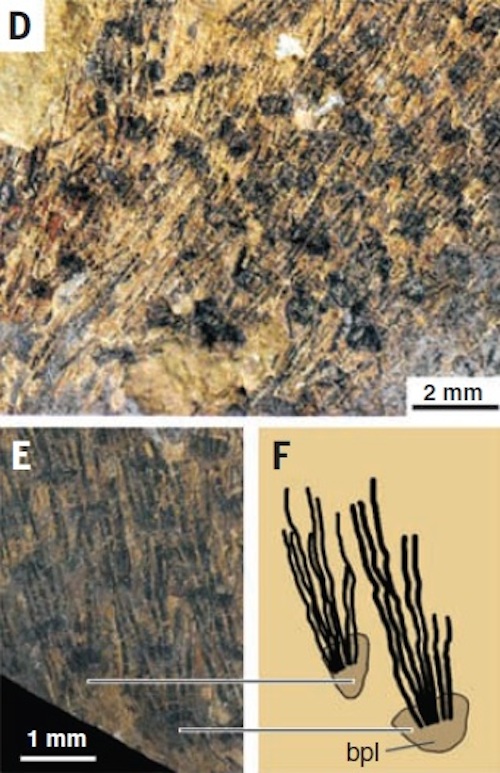 Evolution
Evolution
Feathers Not Flying Over New Dinosaur Fossil
There are three general problems with claims of feathered dinosaur fossils: (1) they aren’t feathered (i.e., they have dinofuzz, a wispy hair-like feature that isn’t the same as feathers), or (2) they aren’t dinosaurs (i.e., they are secondarily flightless birds and not dinosaurs at all), or (3) they aren’t fossils (i.e., they’re one of the examples of fake fossils that’s appeared like the infamous Archaeoraptor). A new fossil ornithischian dinosaur reported in Science is said to have had “avianlike feathers,” but some critics think it belongs in category (1) — i.e., it wasn’t feathered at all. The paper on the fossil in Science states:
Here we report a new ornithischian dinosaur, Kulindadromeus zabaikalicus, with diverse epidermal appendages, including grouped filaments that we interpret as avianlike feathers.
Yet according to an article in National Geographic, “Fluffy Dinosaur Raises Questions About the Origin of Dinofuzz,” we can’t establish that these are feathers:
In terms of typical dinosaur tubercles, Kulindadromeus had hexagonal scales on its lower legs, rounded scales around the hand and ankle, and rows of large scales along the tail. But the fossils also preserved a trio of feathery structures. Single filaments surrounded the dinosaur’s head, torso, and back, while the dinosaur’s upper arms and legs were covered in multi-filament plumes and the dinosaur’s lower leg sported “ribbon-shaped elements” that have not been seen in any other species so far.
The question is whether these fluffy structures are true feathers or fluffy imitations. This has major implications for when true feathers and their immediate forerunners evolved in dinosaurs. If the dinofuzz on Kulindadromeus really is equivalent to that borne by theropods like Sinosauropteryx, then the beginnings of feathers probably coincided with the origin of dinosaurs. If the structures are superficially the same, but not truly equivalent, then feather-like structures either evolved more than once or diverged from some earlier, as-yet-unseen type of integument.
For the moment, there’s still no way to distinguish between these alternative scenarios. At a basic anatomical level paleontologists have yet to discern whether the structures on Psittacosaurus , Tianyulong , and Kulindadromeus can truly be called feathers. Not to mention the need for better fossils of older dinosaurs, close to where the major lineages split, to follow feather origins, as well as a more refined understanding of the circumstances under which fluff, fuzz, and bristles are likely to be preserved.
Did you note the statement in the last paragraph? “At a basic anatomical level paleontologists have yet to discern whether the structures on Psittacosaurus , Tianyulong , and Kulindadromeus can truly be called feathers.” Looking at the diagram from the paper, they sure don’t look much like feathers:

I see wispy hair-like structures. I see dinofuzz. But I don’t see feathers. A prominent critic writing in National Geographic says much the same. Yet these structures are being unapologetically called “feathers” in Science. It seems to me the theory is getting ahead of the data.
